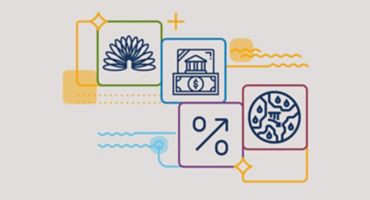Global growth has held up better than expected to date, but could developed markets (DMs) still slide into recession? If so, what would the impact be on emerging markets (EMs)?
In my view, the jury is still out, but, on balance, I see a continuation of the current sluggish growth patterns across DMs as more likely. Were they to fall into a “standard” recession — defined in this context as two to four quarters of quarter-on-quarter contraction — I think most EMs should be able to weather that downturn relatively well.
However, in such a scenario, I expect EM central banks to accelerate rate cuts and to become less focused on the stability and strength of their currency. Below I explore the context underpinning my view and outline potential implications for EM fixed income investors.
Further sluggish growth likely, but DM recession still a risk
Although the global economy has shown signs of resilience over recent quarters, growth is likely to remain sluggish at best. We have experienced the largest and most rapid interest-rate hiking cycle in decades along with quantitative tightening, and the ability of the financial system to absorb both simultaneously has not been tested. Credit growth is now slowing in the US and Europe, while a growing drawdown in household savings is providing less scope to cushion the cycle. Moreover, any stimulus from China in response to its stuttering reopening is unlikely to be the “big bang” it was in the past.
While economic models may tend to overstate the risk of recession — in part because the services sector is underrepresented — history suggests that soft landings are unusual. Some indicators highlight a rising probability of negative growth in the coming quarters. For instance, our analysis shows that:
- During past periods of US yield curve inversion, it took an average of 13 months to mark the peak in activity. The yield curve has been inverted in the US for 11 months.
- There are very tentative signs of labour market weakness. US unemployment has begun to edge higher. History suggests that when unemployment has been at such low rates, it has been one to two percentage points higher 12 months forward.
To date, EMs (excluding China) have also been relatively resilient to rate hikes from both domestic and DM central banks. As in DMs, growth is weak in most countries and has contracted in some, but unemployment is low, while inflation has fallen. Having led the US Federal Reserve by up to 12 months, EM central banks are for the most part done with their rate-hiking cycles, with a few already having initiated rate cuts.
What would a “standard” DM recession mean for EMs?
EMs have faced tough adjustments in the past three decades but, since the inception of the asset class, have had little to no experience of a standard recession in DMs. The global financial crisis (GFC) and COVID were much larger shocks, while in both the taper tantrum of 2013 and the commodity price collapse of 2014 – 2015, EMs were badly hit because of their high deficits and reliance on commodities. If DMs experience more of a standard recession this time around, there will no doubt be negative spillovers for EMs. But, in my view, these are likely to be unpleasant rather than unmanageable for most.
In the event of a DM recession, I expect EMs to largely mirror the DM trajectory, with growth further weakening and potentially contracting, and labour markets adjusting more than has previously been the case. However, the size of any move in commodity prices would be an area to watch, with the main Latin American commodity exporters and South Africa being the most vulnerable.
How might EM policymakers respond?
In aggregate, EMs have experienced their largest hiking cycle of the past two decades. In a scenario where the US and eurozone move to recession later this year or in the first half of 2024, DM and EM central banks should become more confident that inflation will return to target and start cutting rates. EM central banks are likely to move faster, given how far above neutral they have taken policy rates.
To the extent that a standard DM recession lowers global inflationary pressures, EM central banks would become less reliant on currencies to help meet inflation targets, meaning EM central banks could accept a degree of currency depreciation in the event of the US dollar strengthening. Such an adjustment does not have to mean a return to the trend of EM currency weakness of the past decade. While developed markets have witnessed a large expansion of both central bank balance sheets and fiscal deficits, foreign portfolio inflows into EM local markets have been much more muted.
What are the implications for asset prices?
- As we see disinflation and rate cuts ahead, we favour exposure to EM duration, with a preference for Central and Eastern European and Latin American markets. Although rate cuts will reduce carry in Latin America and Central and Eastern Europe, the starting point on policy rates, manageable deficits and cautious rate cuts will support currencies.
- We are positive but cautious on external debt relative to local markets risk, given that spreads are now tight relative to both EM history and DM investment-grade and high-yield debt.










